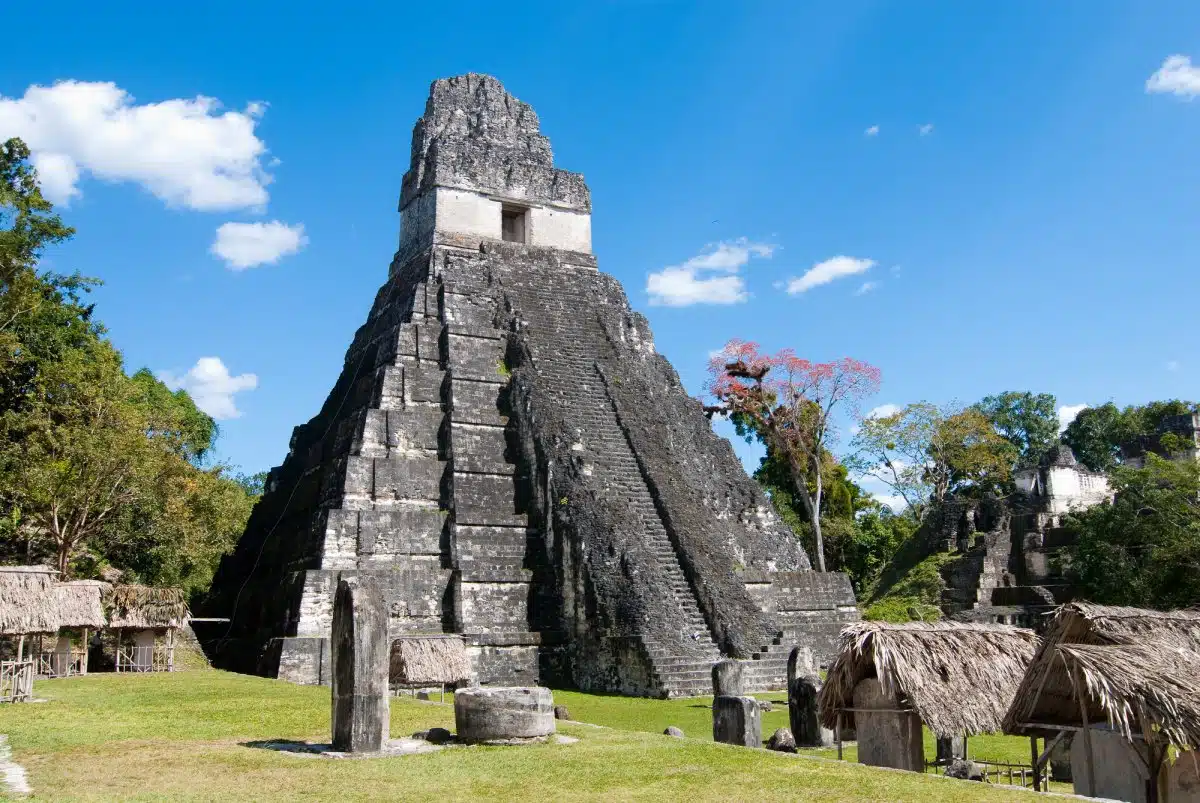Belize, a jewel nestled on the northeastern coast of Central America, is a sanctuary of ancient ruins, lush rainforests, and vibrant coral reefs. This guide is for the discerning traveler seeking to explore the heart of Belize’s unparalleled natural beauty and historical richness. From the majestic Maya temples to the verdant canopies that teem with exotic wildlife and the underwater world of the Belize Barrier Reef, Belize offers an array of experiences that cater to adventurers, historians, and nature lovers alike. Each destination within this guide highlights Belize’s storied landscape, inviting exploration and offering insights into the delicate balance between nature and history.
1. Xunantunich
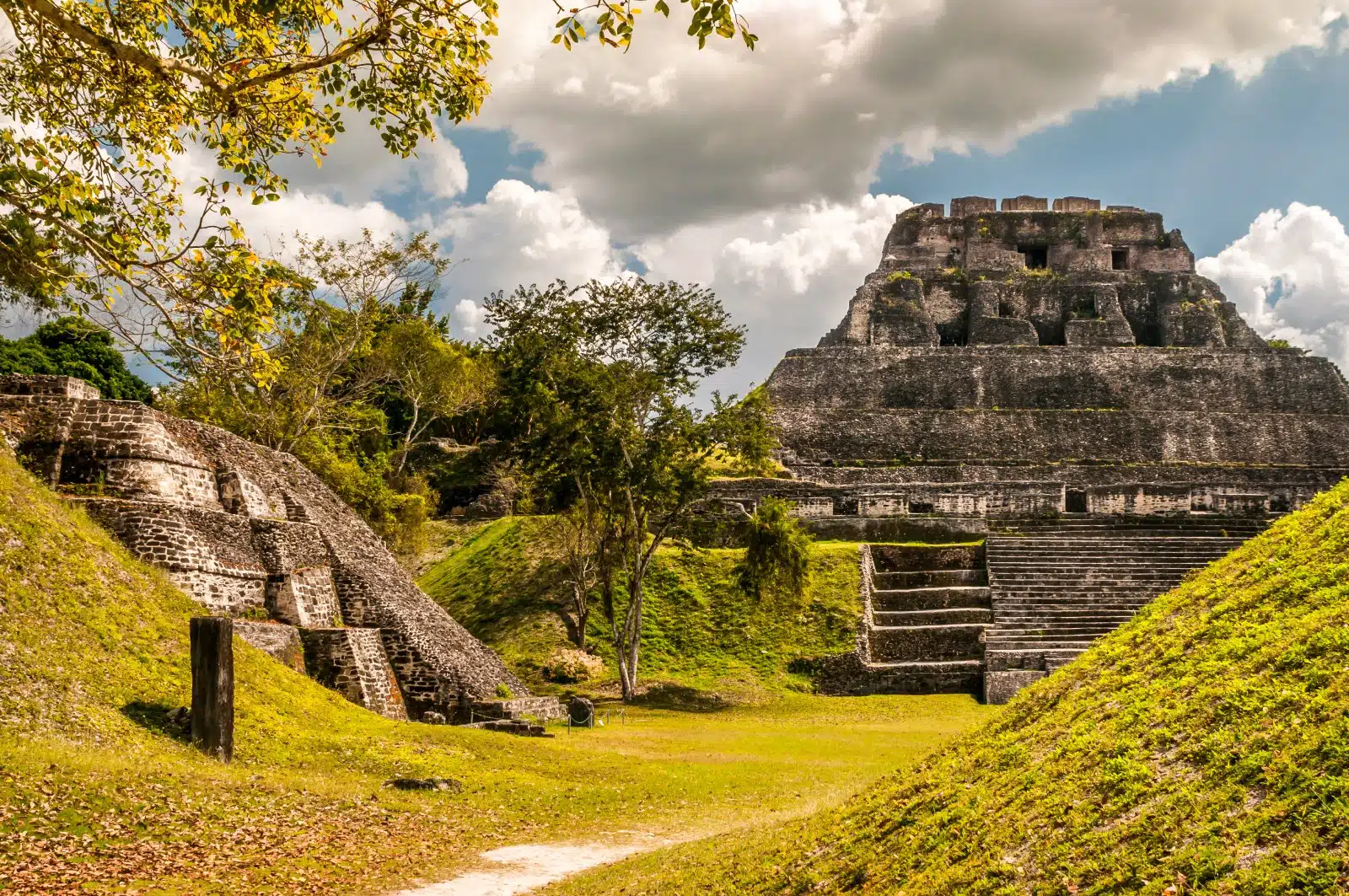
Image Credit: Shutterstock / milosk50
Xunantunich, meaning “Stone Woman” in the Maya language, showcases the spiritual depth of the ancient Maya civilization. Located in the Cayo District, this archaeological site is home to El Castillo, one of the tallest structures in Belize, offering panoramic views of the surrounding jungle and the Mopan River. The site’s plazas, palaces, and ball courts narrate the social and ceremonial life of the Maya, while the friezes and carvings reveal their artistic and astronomical achievements.
Insider’s Tip: Visit early in the morning to avoid the heat and crowds, and to increase your chances of spotting wildlife, such as howler monkeys, in the surrounding forest.
When to Travel: The dry season, from late November to April, is the ideal time to visit, offering clear skies and more comfortable exploration of the ruins.
How to Get There: Xunantunich is accessible from San Ignacio, a major town in western Belize. A hand-cranked ferry takes visitors across the Mopan River, followed by a short drive or walk to the site.
2. The Belize Barrier Reef

Image Credit: Shutterstock / Luiz A. Rocha
The Belize Barrier Reef, a UNESCO World Heritage site, is the second-largest coral reef system in the world. This underwater paradise is home to coral atolls, mangrove forests, and hundreds of islands, offering some of the best snorkeling and diving experiences globally. The reef is a biodiversity hotspot, home to an array of marine life, including endangered species like the West Indian manatee and the hawksbill turtle. Sites like the Great Blue Hole and Hol Chan Marine Reserve showcase the reef’s geological wonders and vibrant aquatic ecosystems.
Insider’s Tip: For an unforgettable snorkeling experience, visit during the whale shark migration near Placencia, typically between March and June, when these gentle giants come to feed on plankton.
When to Travel: The best visibility and weather conditions for exploring the reef are from March to June, coinciding with the dry season and warmer waters.
How to Get There: The reef is accessible from coastal towns such as Belize City, Caye Caulker, and San Pedro. Local tour operators offer a range of snorkeling and diving excursions.
3. Cockscomb Basin Wildlife Sanctuary
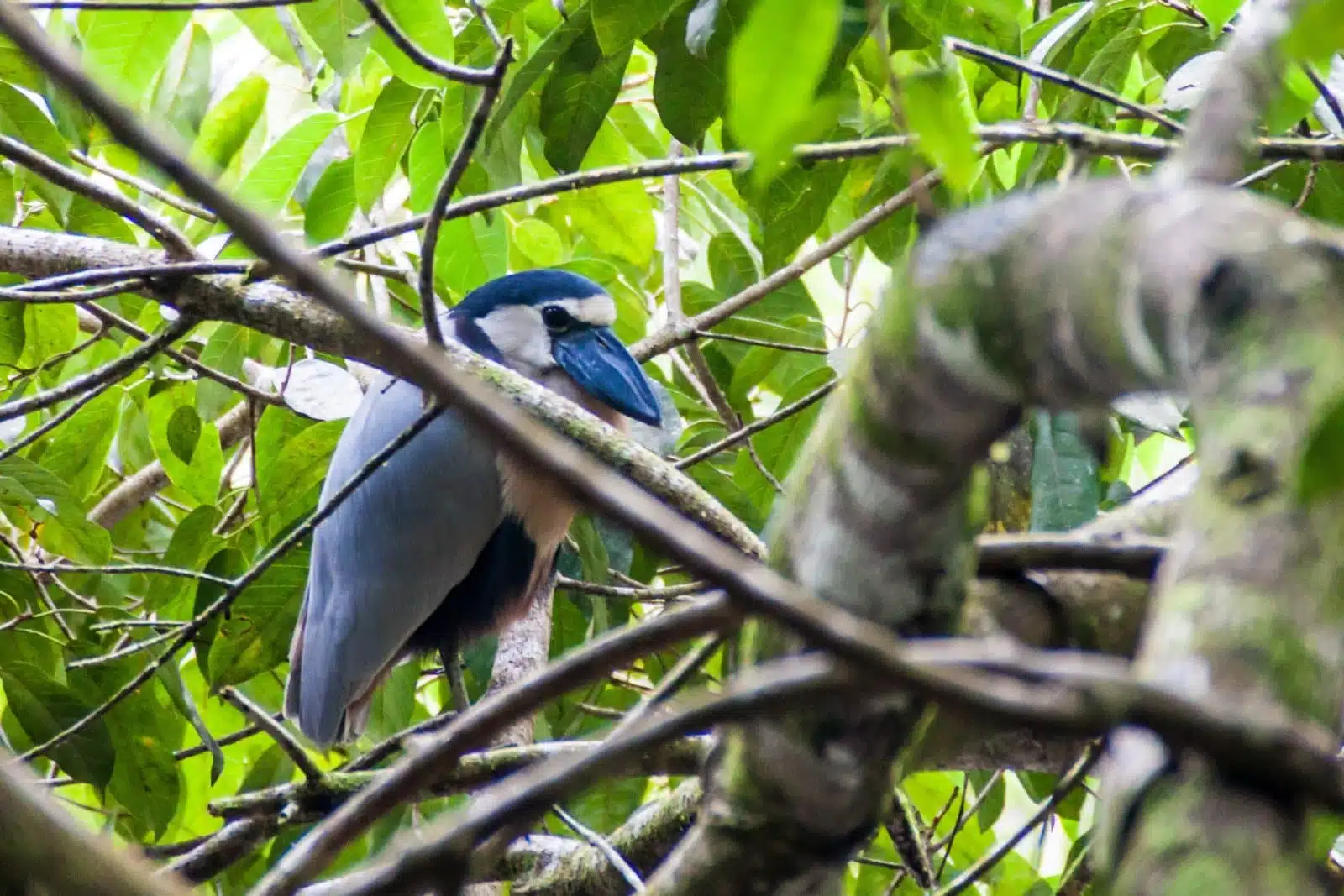
Image Credit: Shutterstock / Matyas Rehak
Cockscomb Basin Wildlife Sanctuary, known as the world’s first jaguar preserve, is a haven for wildlife enthusiasts and hikers. Spanning over 150 square miles of tropical forest, the sanctuary is home to a rich biodiversity, including jaguars, ocelots, and a myriad of bird species. Hiking trails range from easy walks to challenging treks, leading visitors through waterfalls, mountain views, and lush jungle scenery. The sanctuary also plays a crucial role in conservation and research efforts to preserve Belize’s natural heritage.
Insider’s Tip: Engage a local guide to enhance your chances of spotting wildlife and learn about the rainforest’s flora and fauna.
When to Travel: The cooler, drier months from December to April provide the most comfortable conditions for hiking and wildlife spotting.
How to Get There: The sanctuary is located in southern Belize, near the town of Dangriga. It can be reached by car or bus from Belize City or Placencia.
4. Caracol
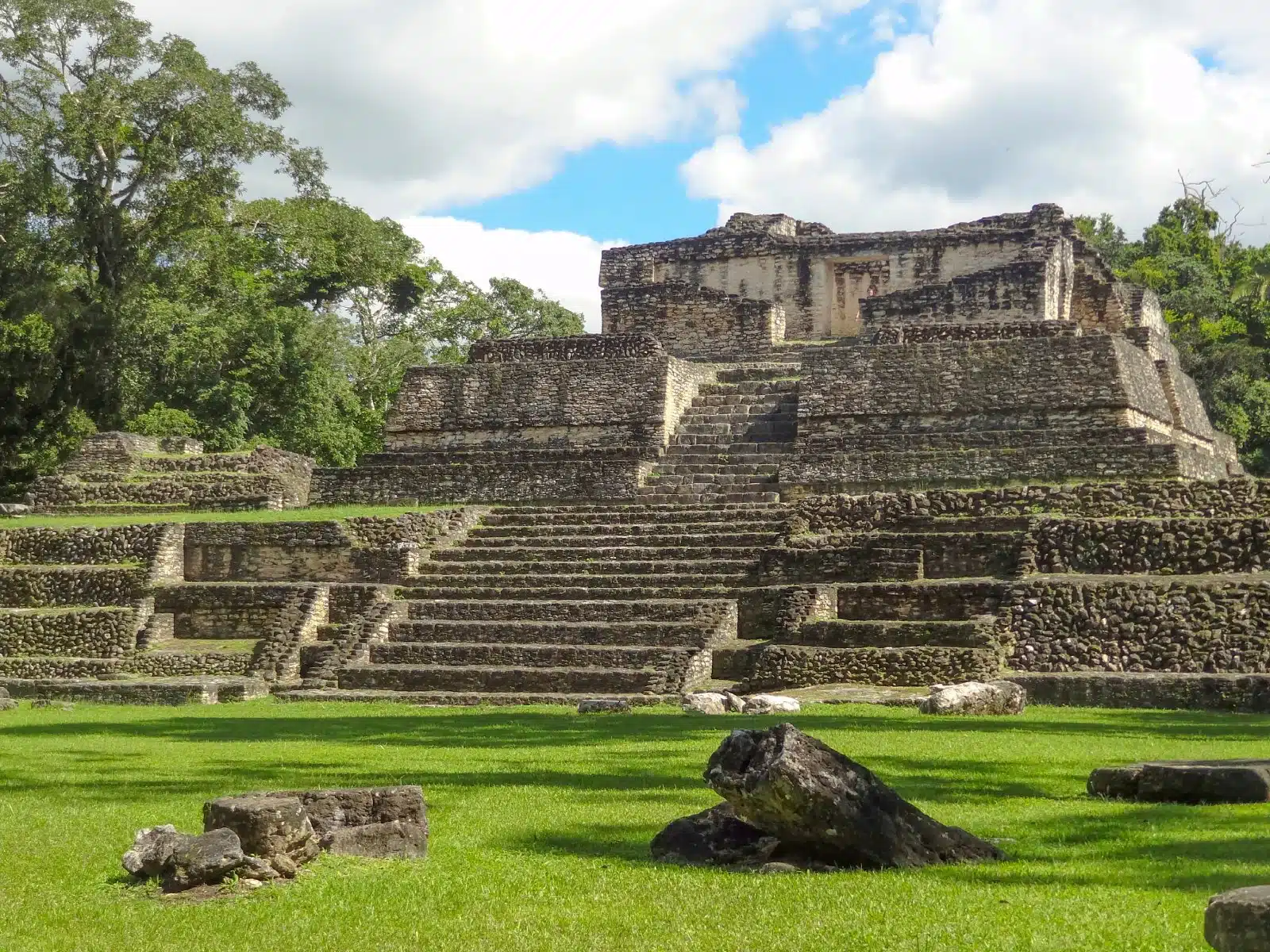
Image Credit: Shutterstock / PRILL
Caracol is Belize’s largest Maya archaeological site, nestled within the Chiquibul Forest Reserve. Once a major political center, Caracol’s extensive complex includes towering pyramids, royal tombs, and ancient astronomical observatories. The site’s most iconic structure, Caana (“Sky Palace”), remains the tallest man-made structure in Belize, offering breathtaking views of the surrounding jungle. Exploring Caracol provides a glimpse into the Maya civilization’s sophistication and highlights the deep connection between the ancient people and their environment.
Insider’s Tip: Wear sturdy footwear and bring plenty of water for the hike. The remote location and lack of facilities make it essential to come prepared.
When to Travel: The dry season from November to April is the best time to visit Caracol, with more accessible roads and less chance of rain interrupting your exploration.
How to Get There: Caracol is located in the Cayo District, accessible via a rough road from San Ignacio. Due to its remote location, visiting with a guided tour is recommended for safety and to gain historical context.
5. The Great Blue Hole
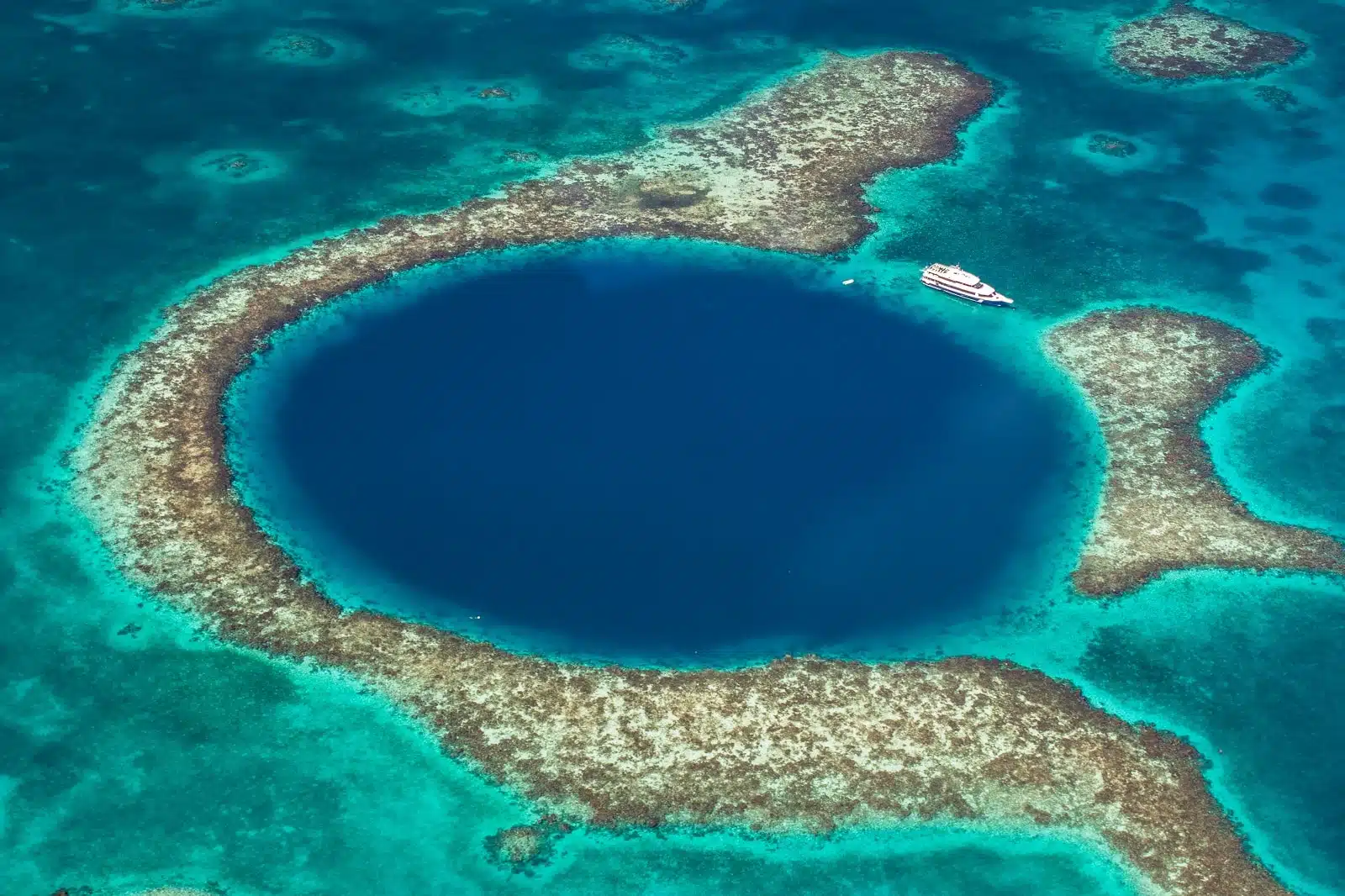
Image Credit: Shutterstock / Globe Guide Media Inc
The Great Blue Hole, part of the Belize Barrier Reef Reserve System, is a giant marine sinkhole off the coast of Belize. Visible from space, this circular dive site, over 300 meters across and 125 meters deep, is famed for its crystal-clear waters and diverse marine life. Diving in the Great Blue Hole offers a once-in-a-lifetime experience, with the chance to explore stalactite formations and encounter species such as Caribbean reef sharks and midnight parrotfish. The site’s geological and ecological significance make it a must-visit for serious divers and marine enthusiasts.
Insider’s Tip: Diving the Great Blue Hole is best suited for experienced divers due to its depth and the technical skills required. Ensure you’re comfortable with deep dives and have the appropriate certifications.
When to Travel: April to June offers the best conditions for diving, with calm seas and optimal water clarity.
How to Get There: The Great Blue Hole is most commonly accessed from Caye Caulker or San Pedro. Dive tours can be arranged directly through local dive shops on these islands.
6. Hopkins Village
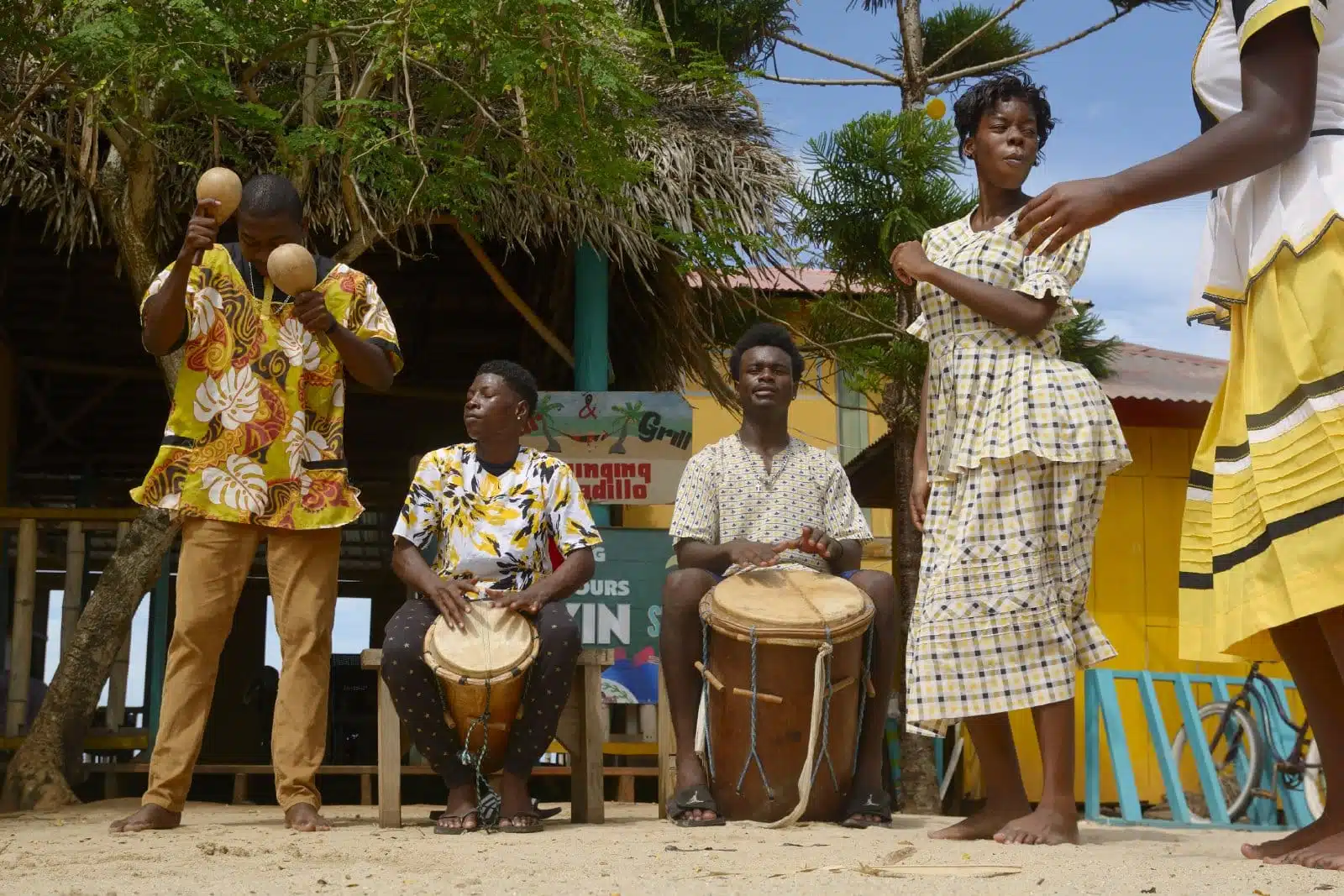
Image Credit: Shutterstock / Roi Brooks
Hopkins Village, a small Garifuna community on the coast of Belize, offers a vibrant cultural experience. Known for its friendly locals, pristine beaches, and rich Garifuna culture, Hopkins is a gateway to the Belize Barrier Reef and the Cockscomb Basin Wildlife Sanctuary. Visitors can enjoy drumming lessons, traditional cooking classes, and canoe trips through nearby mangroves. The village’s laid-back atmosphere and its cultural and natural attractions make Hopkins an ideal spot for travelers looking to experience Belize’s diverse heritage.
Insider’s Tip: Participate in a Garifuna drumming session to immerse yourself in the rhythms and traditions of the Garifuna culture, recognized by UNESCO as a Masterpiece of the Oral and Intangible Heritage of Humanity.
When to Travel: The dry season, from November to April, is the most pleasant time to visit, with sunny days perfect for beach activities and cultural exploration.
How to Get There: Hopkins is located about 2.5 hours by car from Belize City. Buses and private transfers are available, with the nearest major airport being in Dangriga.
7. Lamanai
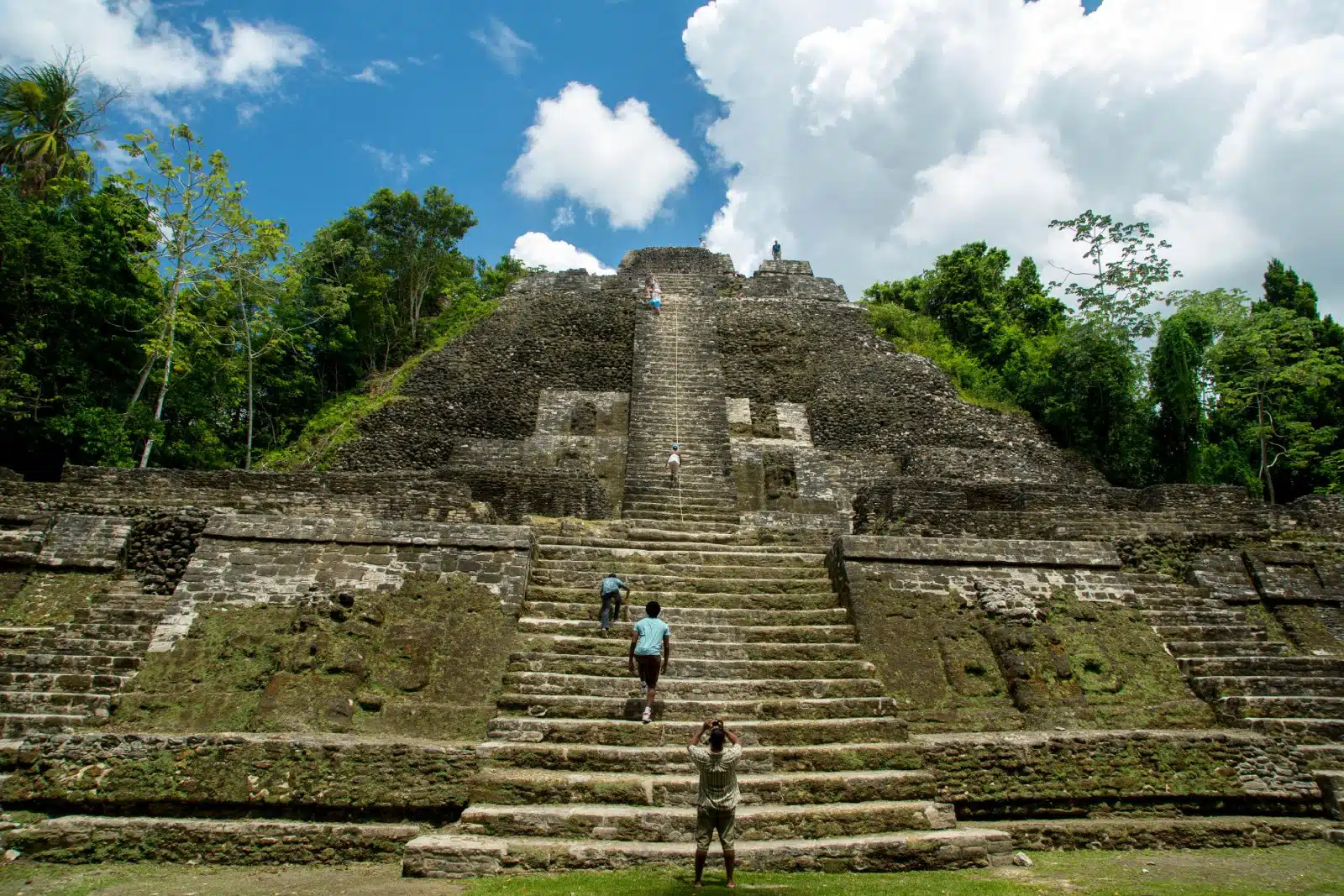
Image Credit: Shutterstock / Wata51
Lamanai, meaning “submerged crocodile” in the Maya language, is an archaeological site that sits on the banks of the New River Lagoon in northern Belize. Unlike many other Maya sites, Lamanai was occupied continuously for over 3,000 years, from the Preclassic period into the Colonial era. The site’s remote location, accessible only by a riverboat journey through dense rainforest, adds to its allure. Highlights include the Mask Temple, High Temple, and the Jaguar Temple, each adorned with impressive carvings and offering insights into the Maya’s complex society and cosmology.
Insider’s Tip: Take the riverboat tour to Lamanai at dawn or dusk when the jungle is most alive with wildlife, enhancing your journey to the ruins with the sights and sounds of tropical birds and monkeys.
When to Travel: The cooler, drier months from November to April are ideal for visiting Lamanai, ensuring a more comfortable exploration of the ruins and a higher likelihood of wildlife sightings during the river journey.
How to Get There: Lamanai is most commonly accessed from Orange Walk Town. Tours typically include a scenic boat ride along the New River, providing an adventurous start to your exploration of the ruins.
8. Caye Caulker
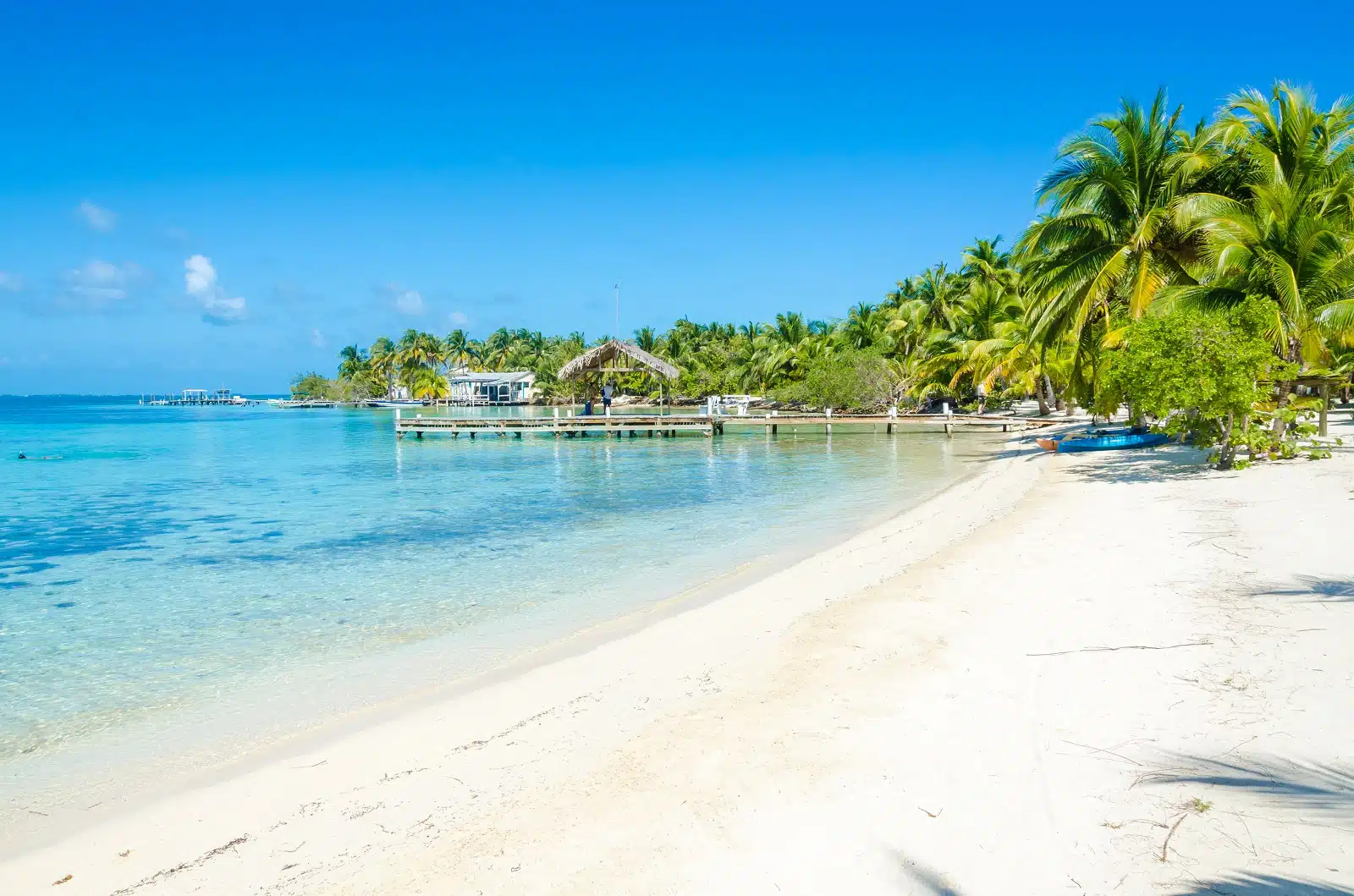
Image Credit: Shutterstock / Simon Dannhauer
Caye Caulker, a small limestone coral island off the coast of Belize, epitomizes the laid-back Caribbean lifestyle. With its motto of “Go Slow,” Caye Caulker invites visitors to unwind on its sandy shores, explore the Belize Barrier Reef, and enjoy the island’s casual dining and nightlife. The island is divided by a narrow channel called The Split, where locals and tourists alike gather to swim, sunbathe, and socialize. Caye Caulker’s charm lies in its simplicity and the easy access it provides to some of Belize’s most beautiful underwater sites, including Shark Ray Alley and Hol Chan Marine Reserve.
Insider’s Tip: Rent a bike to explore the island at your leisure. Caye Caulker is small and flat, perfect for cycling from beach to beach or finding a quiet spot to watch the sunset.
When to Travel: The peak season from December to April coincides with the best weather, offering sunny days ideal for snorkeling, diving, and enjoying the island vibe.
How to Get There: Caye Caulker is accessible by water taxi from Belize City, and the journey takes about 45 minutes. Flights from Belize City to the island’s small airstrip are also available.
9. Actun Tunichil Muknal (ATM) Cave
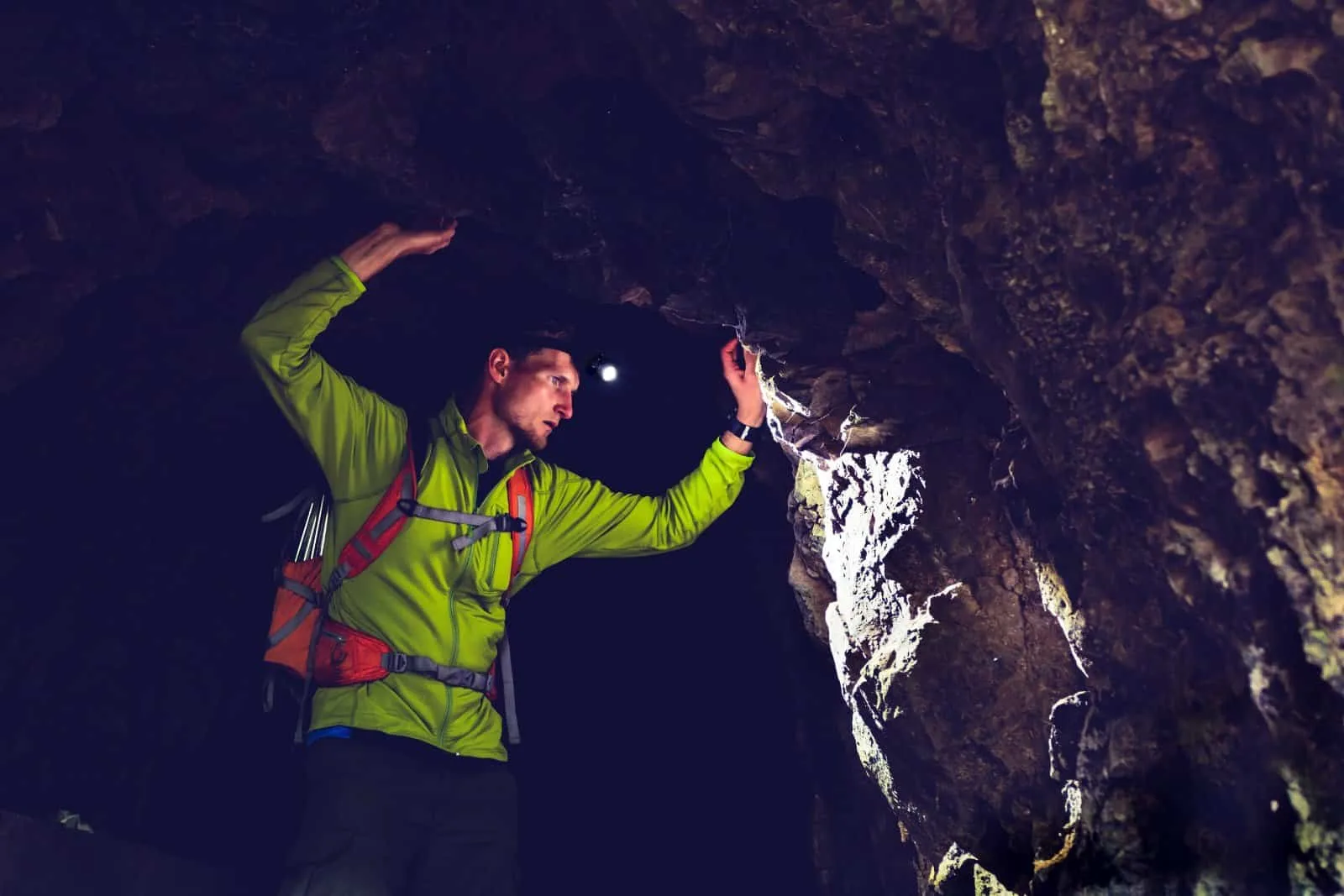
Image Credit: Shutterstock / Blazej Lyjak
Actun Tunichil Muknal, or the ATM Cave, is one of Belize’s most awe-inspiring natural and archaeological wonders. Located in the Tapir Mountain Nature Reserve, this cave was used by the ancient Maya for ceremonial purposes, including human sacrifices. Visitors can hike, wade, and swim through the cave’s chambers, encountering crystallized skeletons, pottery, and ancient artifacts left as offerings to the Maya gods. The ATM Cave offers a unique and thrilling glimpse into the Maya underworld, physically and mentally challenging visitors as they navigate its dark waters and tight passages.
Insider’s Tip: Wear sturdy water shoes and comfortable clothing that you don’t mind getting wet. The cave’s terrain is rugged, and you’ll be walking through water for a significant portion of the tour.
When to Travel: The dry season from January to May is the best time to visit the ATM Cave, as lower water levels make for easier navigation and exploration.
How to Get There: The ATM Cave is located near San Ignacio. Licensed guides lead tours and include transportation from San Ignacio, making it the most convenient starting point for your adventure.
10. Mountain Pine Ridge Forest Reserve
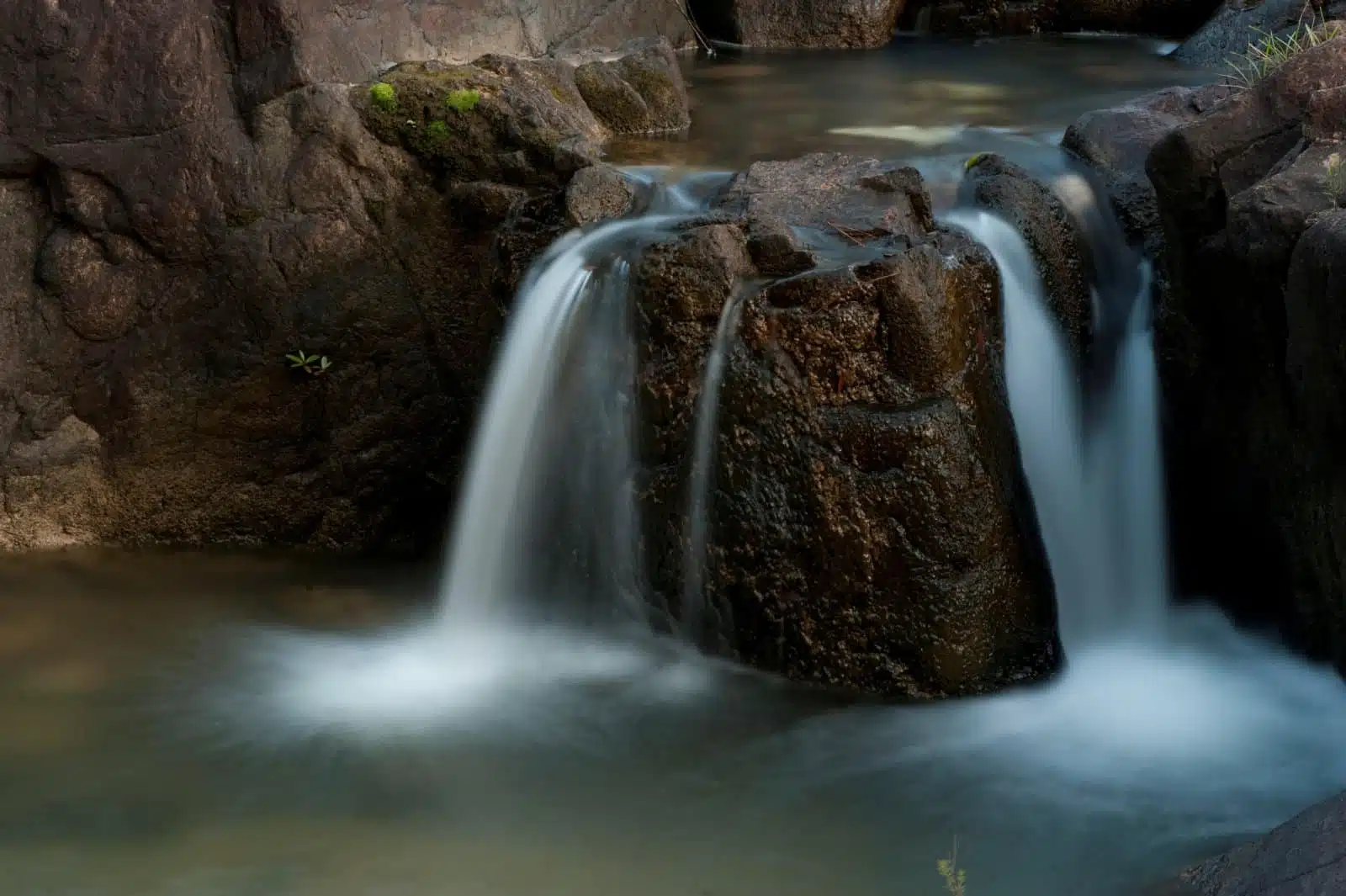
Image Credit: Shutterstock / RHIMAGE
The Mountain Pine Ridge Forest Reserve starkly contrasts Belize’s tropical landscape with its cool pine forests, cascading waterfalls, and granite outcrops. This protected area is home to Rio Frio Cave, Rio On Pools, and the stunning Big Rock Falls, providing ample hiking, swimming, and picnicking opportunities in a serene mountain setting. The reserve’s unique ecosystem supports a variety of wildlife, including the elusive jaguar and the rare orange-breasted falcon, making it a must-visit for nature lovers and outdoor enthusiasts.
Insider’s Tip: Pack a picnic and spend the day exploring the reserve’s natural attractions. The Rio On Pools are perfect for a refreshing dip, while the overlooks offer breathtaking views of the surrounding landscape.
When to Travel: The cooler months from November to February are ideal for visiting the Mountain Pine Ridge Forest Reserve, offering a pleasant escape from the coastal heat.
How to Get There: The reserve is located in the Cayo District, accessible by road from San Ignacio. While some areas can be reached with a standard vehicle, a 4WD is recommended for navigating the reserve’s rougher trails.
11. Belize Zoo
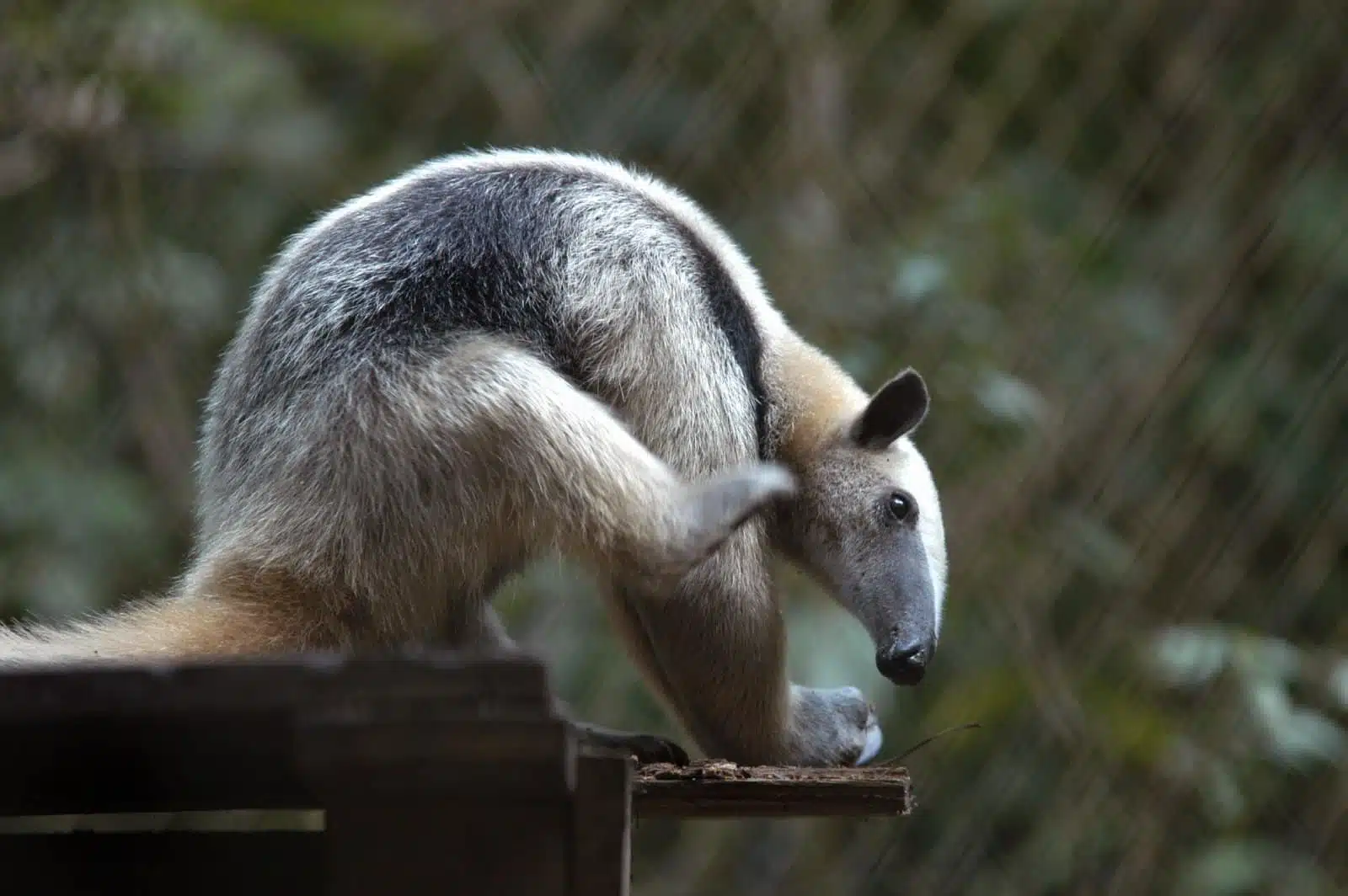
Image Credit: Shutterstock / haak78
The Belize Zoo is a unique conservation facility that houses over 170 animals, all native to Belize. The zoo focuses on education, research, and rehabilitation, allowing visitors to see Belize’s incredible wildlife up close in naturalistic habitats. Highlights include the tapir, Belize’s national animal, jaguars, scarlet macaws, and howler monkeys. The zoo’s commitment to conservation and its role in wildlife rescue and rehabilitation make it an inspiring visit for those interested in preserving Belize’s natural heritage.
Insider’s Tip: Consider taking a night tour of the zoo to see nocturnal animals in action. It’s a different experience to hear the sounds of the jungle come alive as the sun sets.
When to Travel: The zoo is open year-round, but the cooler months from November to April offer the most comfortable conditions for walking around and observing the animals.
How to Get There: The Belize Zoo is located about 29 miles west of Belize City, easily accessible by car or bus on the Western Highway. It’s a convenient stop on the way to or from San Ignacio.
12. Placencia Peninsula
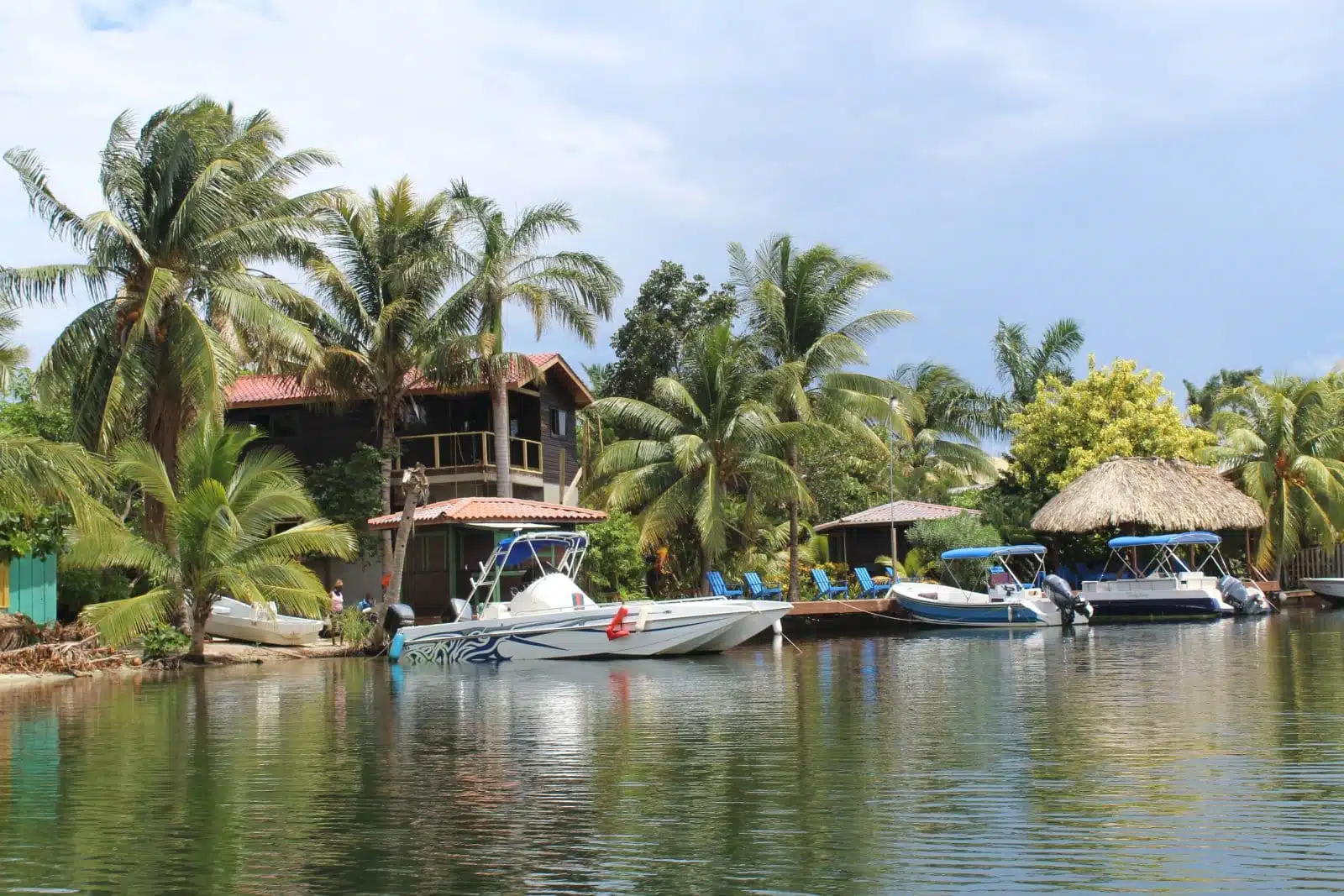
Image Credit: Shutterstock / an Peter Morton
The Placencia Peninsula is known for its miles of pristine beaches, vibrant Creole culture, and access to outstanding offshore fishing, snorkeling, and diving. This narrow strip offers the perfect blend of relaxation and adventure with its laid-back villages, boutique resorts, and beach bars. Placencia is also an excellent base for exploring the nearby Cayes and the Belize Barrier Reef. The peninsula’s annual Lobsterfest, held in June, celebrates the start of the lobster season with food, music, and festivities, drawing locals and tourists alike.
Insider’s Tip: Explore the peninsula by kayak or paddleboard to discover secluded beaches and mangrove-lined lagoons. It’s a peaceful way to experience Placencia’s natural beauty and observe wildlife.
When to Travel: The dry season from November to May is the best time to visit Placencia, with sunny weather ideal for beach activities and water sports.
How to Get There: Placencia is accessible by road from Belize City, and the journey takes about 3.5 hours. Regular flights from Belize City to Placencia Airport offer a quicker alternative, with stunning coastline and Cayes aerial views.
The Bottom Line
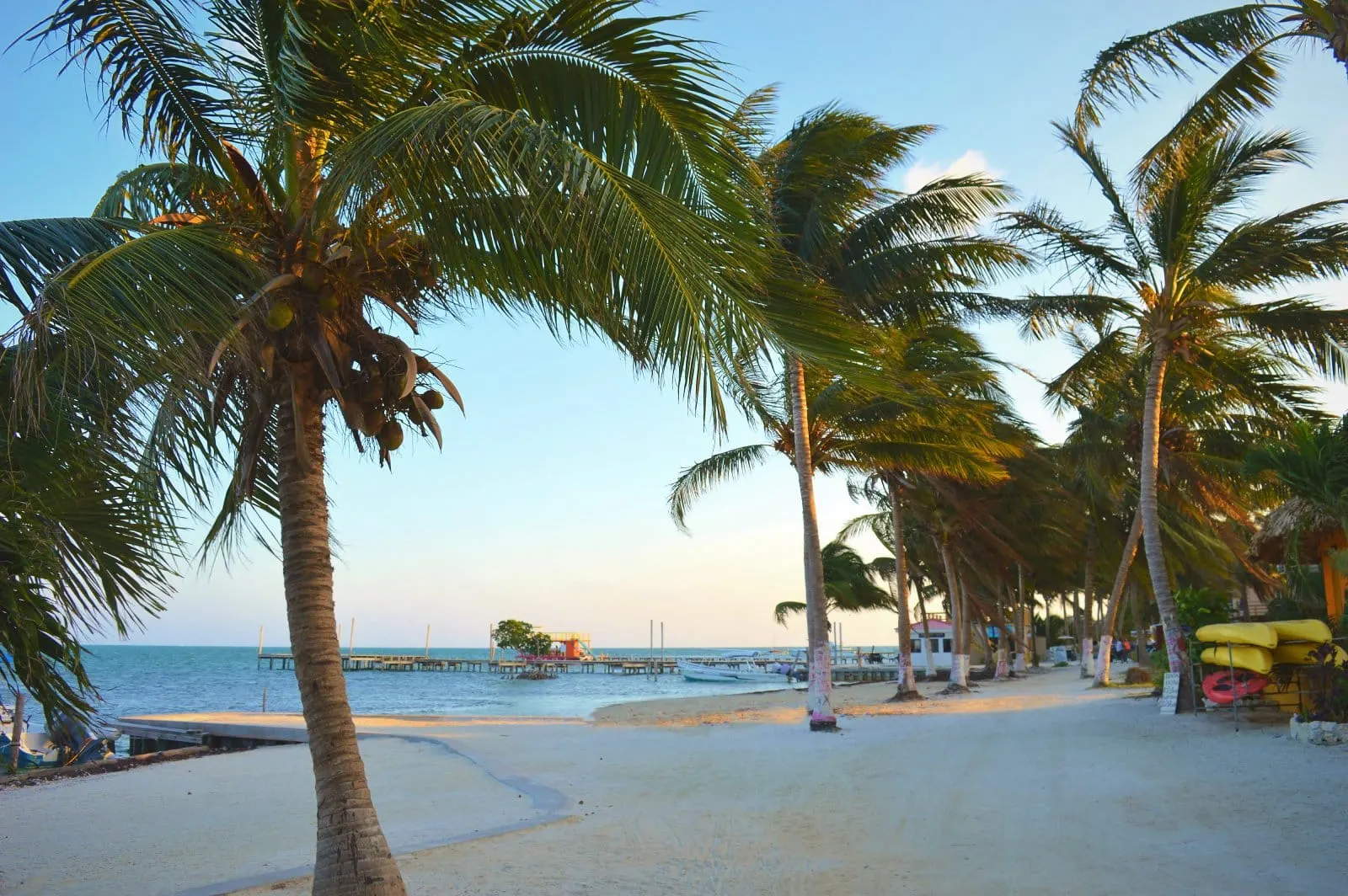
Image Credit: Shutterstock / Johanna Veldstra
Belize is a country of immense cultural and natural diversity, offering experiences that resonate with the adventurous, the curious, and the ecologically minded. From the ancient ruins that stand as silent witnesses to a rich historical tapestry, through the dense rainforests teeming with life, to the vibrant reefs beneath the waves, Belize invites exploration and contemplation. Each destination within this guide offers a unique perspective on the beauty and complexity of this remarkable country. As you plan your journey through the ruins, rainforests, and reefs of Belize, remember that the true essence of travel lies in the connections we forge with the places we visit and the stories we carry with us.
More From The Green Voyage
12 Best Practices for Sustainable Travel in 2024 – How to Travel With Minimal Environmental Impact
Unlocking Hotel Perks – A Traveler’s Guide to Maximizing Hotel Reward Programs for Optimal Benefits
Travel Hacks for Frequent Flyers – 6 Tips and Tricks to Make the Best of Air Travel
The post Exploring the Ruins, Rainforests, and Reefs of Belize 2024 first appeared on The Green Voyage.
Featured Image Credit: Shutterstock / Mark Yarchoan.
For transparency, this content was partly developed with AI assistance and carefully curated by an experienced editor to be informative and ensure accuracy.
Tips for Trip Success
Book Your Flight
Find an inexpensive flight by using Kayak, a favorite of ours because it regularly returns less expensive flight options from a variety of airlines.
Book Your Hotel or Special Accommodation
We are big fans of Booking.com. We like their review system and photos. If we want to see more reviews and additional booking options, we go to Expedia.
You Need Travel Insurance!
Good travel insurance means having total peace of mind. Travel insurance protects you when your medical insurance often will not and better than what you get from your credit card. It will provide comprehensive coverage should you need medical treatment or return to the United States, compensation for trip interruption, baggage loss, and other situations.Find the Perfect Insurance Plan for Your Trip
